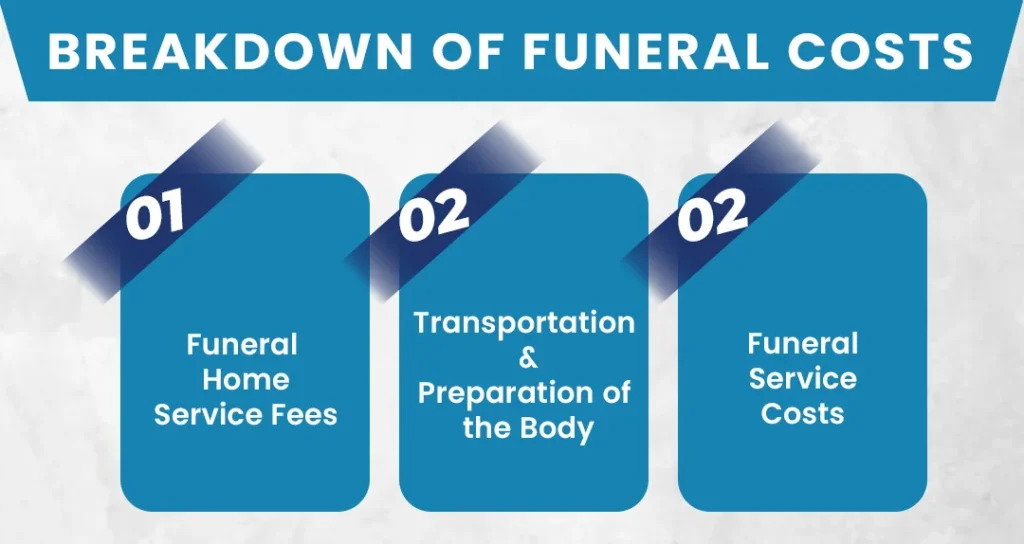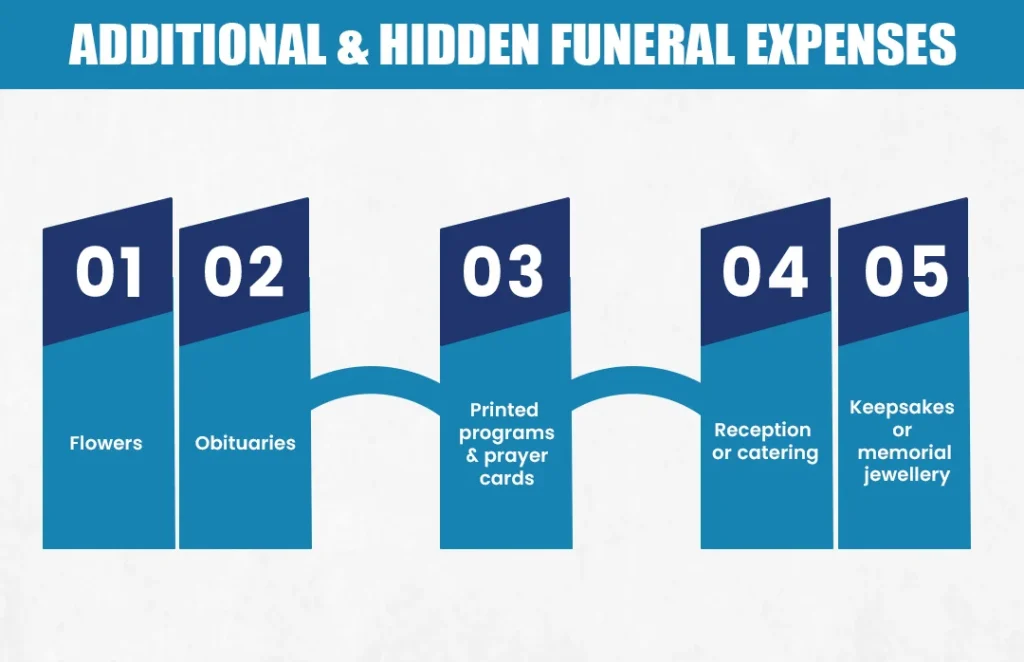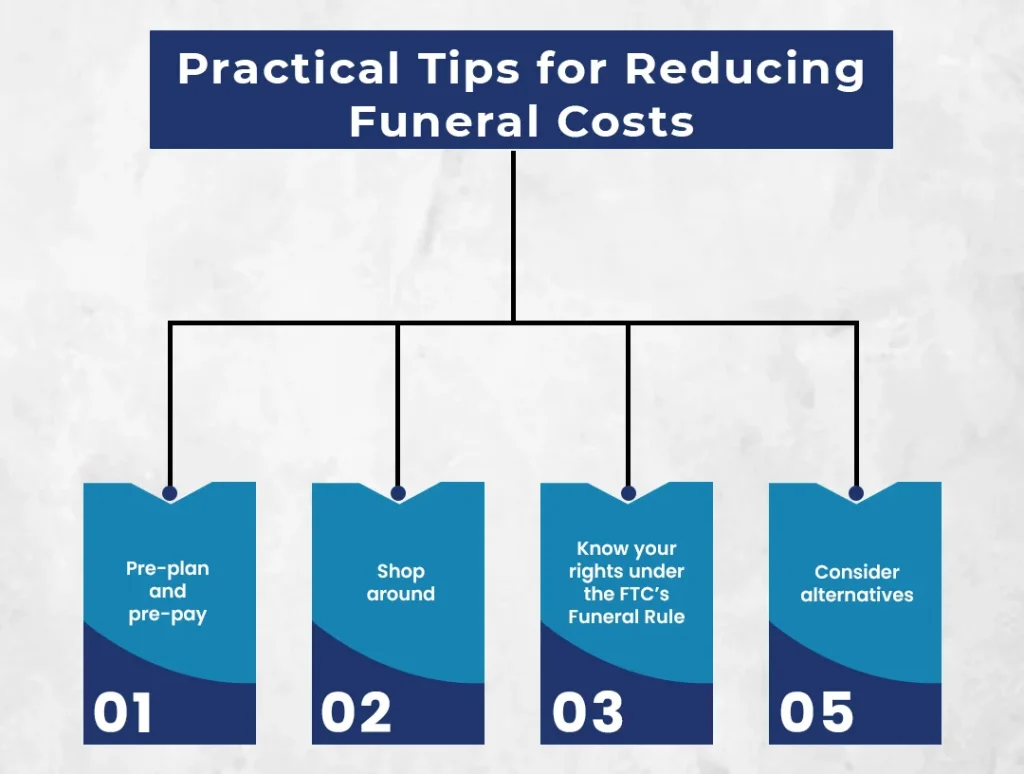Last Updated on: September 6th, 2025
Reviewed by Kyle Wilson
Losing a loved one is one of life’s most difficult moments. Along with the emotional burden comes a practical challenge many families are unprepared for—the financial reality of arranging a funeral. According to the National Funeral Directors Association (NFDA), the average cost of a funeral in the United States is between $7,000 and $10,000, depending on the type of service. This figure doesn’t include cemetery costs, flowers, or extras, which can easily push the total much higher.
That’s why understanding a funeral cost breakdown is so important. Knowing what expenses to expect, what is optional, and what’s required by law can help families make informed choices and avoid unnecessary financial strain. In this guide, we’ll cover the complete breakdown of funeral costs, compare cremation and burial, discuss hidden fees, and share tips for reducing expenses—all so you can plan ahead with clarity.
Get Free Quotes
Customized Options Await
Funeral costs vary widely based on region, funeral home pricing, and the type of service chosen. But looking at averages provides a helpful starting point.
Several factors drive these costs:
Simply put, there is no “one price fits all.” That’s why a detailed funeral costs breakdown is essential.
A funeral bill is made up of multiple line items. Let’s look at the major categories.
Every funeral home charges a basic services fee, which is non-negotiable. This usually includes:
Average cost: $2,000–$2,500.
This fee forms the foundation of a funeral home cost breakdown. Families should know it upfront, as it cannot be declined.
Funeral homes charge for moving and preparing the body. Costs typically include:
These services are a significant part of the funeral cost breakdown and vary depending on family choices.
Whether held at a funeral home, church, or graveside, services come with costs such as:
These fees make up the funeral service cost breakdown, reflecting the labor and space required.

Cremation is growing in popularity due to lower costs and flexible memorial options. According to the Cremation Association of North America (CANA), the U.S. cremation rate surpassed 57% in 2021.
Families choosing cremation should compare options carefully, as a cremation funeral cost breakdown reveals a wide range of possibilities.
For those who prefer a traditional burial, costs are typically higher than cremation due to cemetery fees and casket pricing.
When you add these up, the cost of funeral breakdown for burial often exceeds $10,000.
Beyond the basics, families are often surprised by extra charges that add up quickly.
These items can significantly increase the funeral costs breakdown, sometimes adding thousands of dollars.

Funerals don’t have to create overwhelming debt. There are ways to lower expenses while still honoring a loved one.
By making informed choices, families can navigate the funeral service cost breakdown while maintaining dignity and respect.

When looking at a funeral cost breakdown, it helps to weigh the pros and cons of each option. Every choice—burial, cremation, or pre-planning—has financial and emotional factors to consider.
Pros | Cons |
Provides a permanent place to visit loved ones. | Generally the most expensive option ($7,000–$12,000+). |
Familiar and culturally significant for many families. | Ongoing costs for cemetery maintenance. |
Can include full traditional services with viewing and ceremony. | Requires more resources, less environmentally friendly. |
Pros | Cons |
More affordable ($2,000–$7,000). | No permanent gravesite unless family purchases one. |
Flexible memorial options (keep ashes, scatter, or bury). | May conflict with some religious or cultural traditions. |
Environmentally lighter footprint compared to burial. | Families sometimes struggle with what to do with remains. |
Pros | Cons |
Eco-friendly and sustainable. | Not available everywhere in the U.S. |
Typically cheaper than traditional burial (simple shroud/biodegradable casket). | May not allow traditional monuments or markers. |
Often held in natural settings, offering peaceful memorial sites. | Limited options for families wanting a formal service. |
Pros | Cons |
Locks in today’s prices, shielding against inflation. | Ties up funds that could be used elsewhere. |
Reduces stress on surviving family members. | Risk of funeral home closure (though state laws often provide protections). |
Allows individuals to customize their funeral preferences. | Some pre-paid plans have hidden fees or limited transferability. |
Funerals are emotionally difficult, and the financial side only adds to the stress. By understanding a detailed funeral cost breakdown, families can make decisions with clarity, avoid overspending, and focus on what truly matters—honoring their loved one’s memory.
Whether you choose cremation, traditional burial, or an alternative like a green funeral, planning ahead and knowing your rights can reduce costs significantly. Transparency, preparation, and careful comparison can make this inevitable part of life less overwhelming, both emotionally and financially.
On average, funerals cost between $7,000 and $10,000 for a traditional burial. Cremation is slightly less, averaging $6,000–$7,000 with a ceremony, or as low as $2,000 for direct cremation.
Typically, the casket is the single largest expense, with prices averaging $2,500 but often reaching $10,000 or more for premium models. Cemetery costs (plots, headstones) are also major expenses.
Funeral expenses usually include the funeral home’s basic services fee, body preparation, transportation, ceremony costs, casket or urn, cemetery plot, and optional extras like flowers, obituaries, and receptions.
High costs stem from labor, facility use, merchandise (especially caskets), and cemetery expenses. Lack of price transparency also contributes, making comparison shopping essential.
Senior Writer & Licensed Life Insurance Agent
Iqra is a dynamic and insightful senior writer with a passion for life insurance and financial planning. With over 8 years of hands-on experience in the insurance industry, Iqra has earned a reputation for delivering clear, actionable advice that empowers individuals to make informed decisions about their financial future. At Burial Senior Insurance, she not only excels as a licensed insurance agent but also as a trusted guide who has successfully advised over +1500 clients, helping them navigate the often complex world of life insurance and annuities. Her articles have been featured in top-tier financial publications, making her a respected voice in the industry.

Burial Senior Insurance provides information and services related to burial insurance for senior citizens, including policy options and end-of-life support services.
Copyright © Burial Senior Insurance 2025. All Right Reserved.